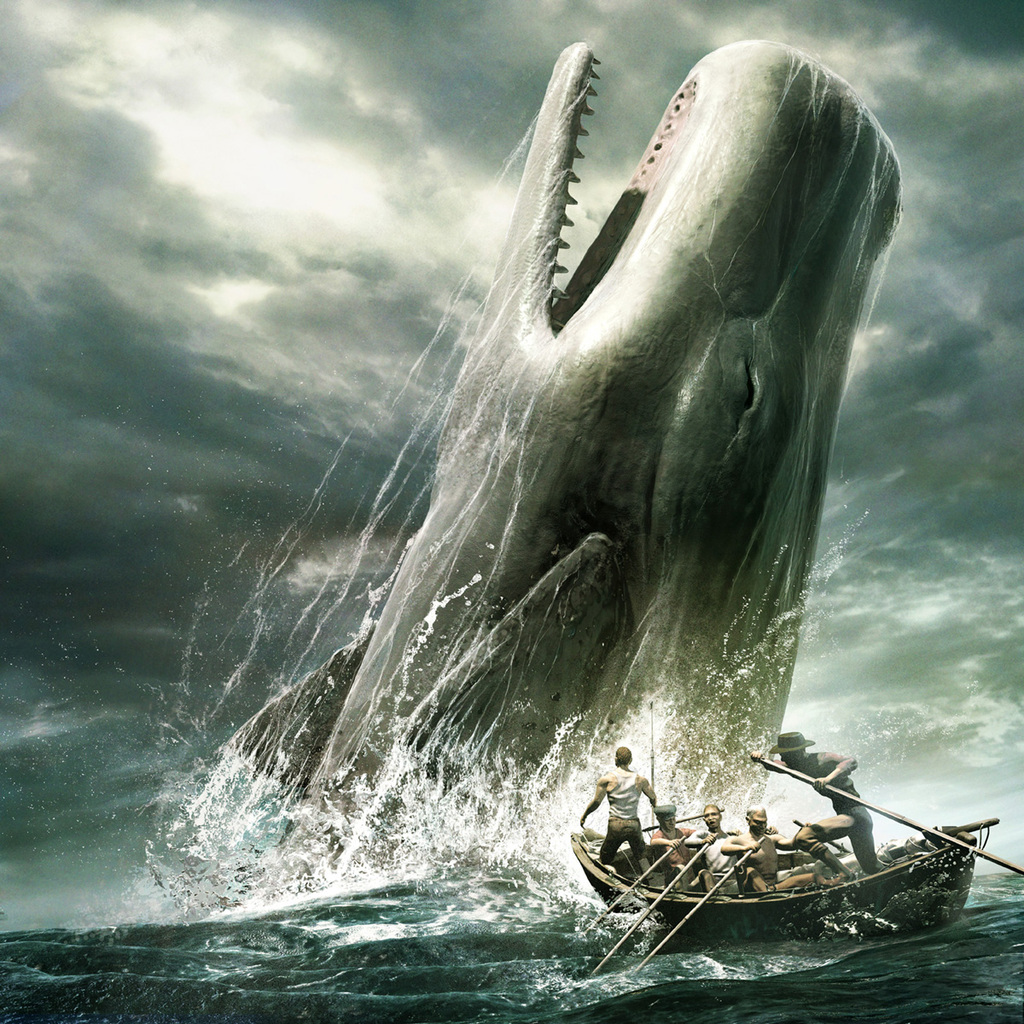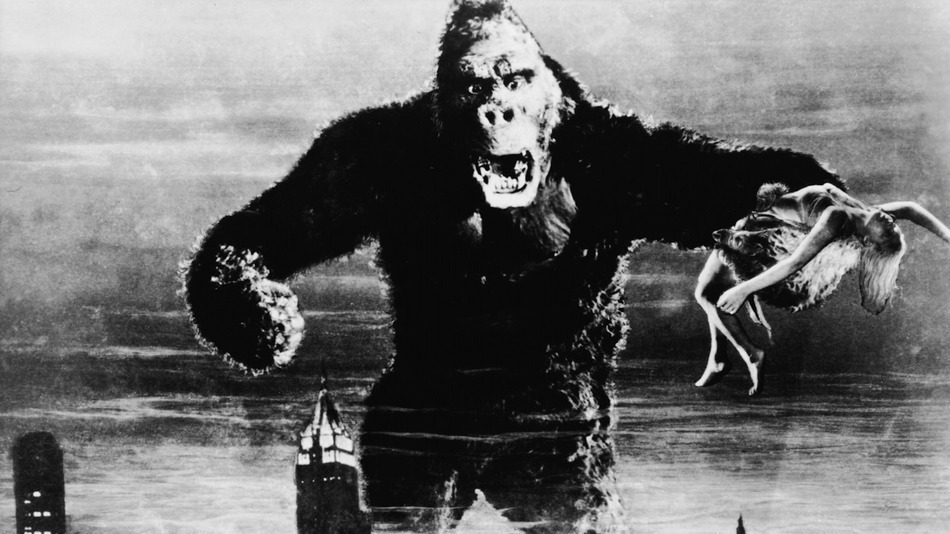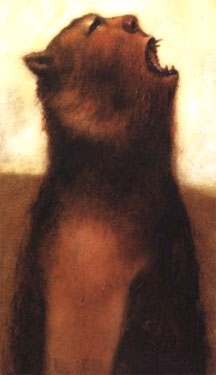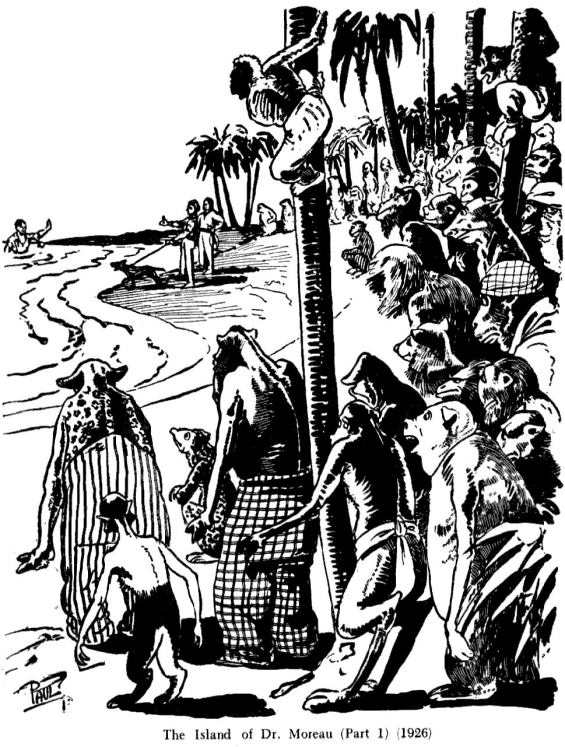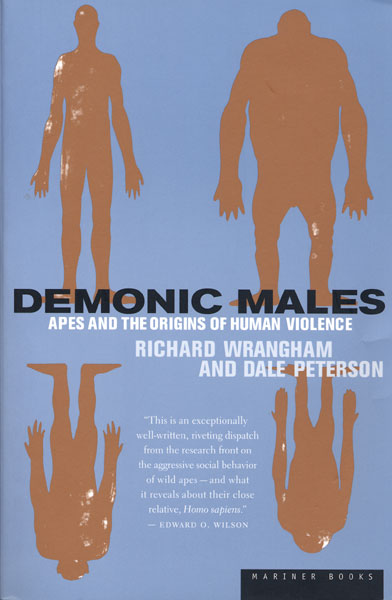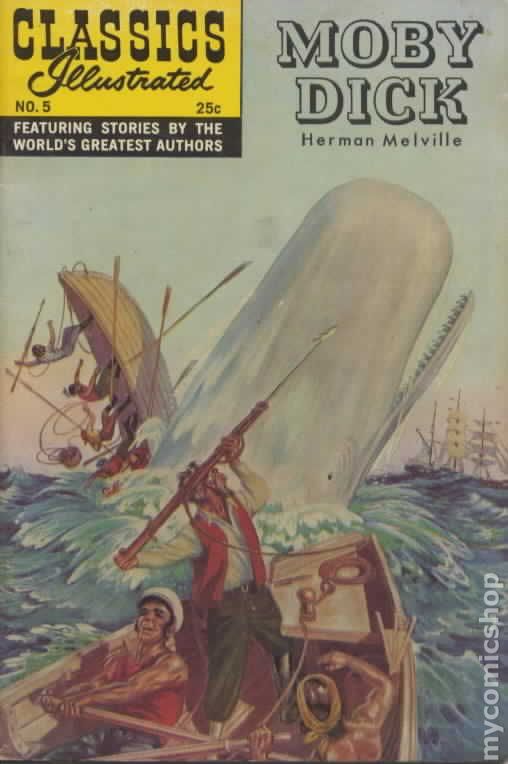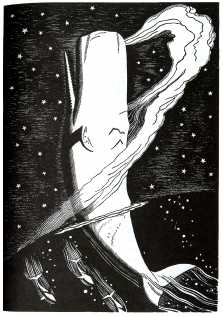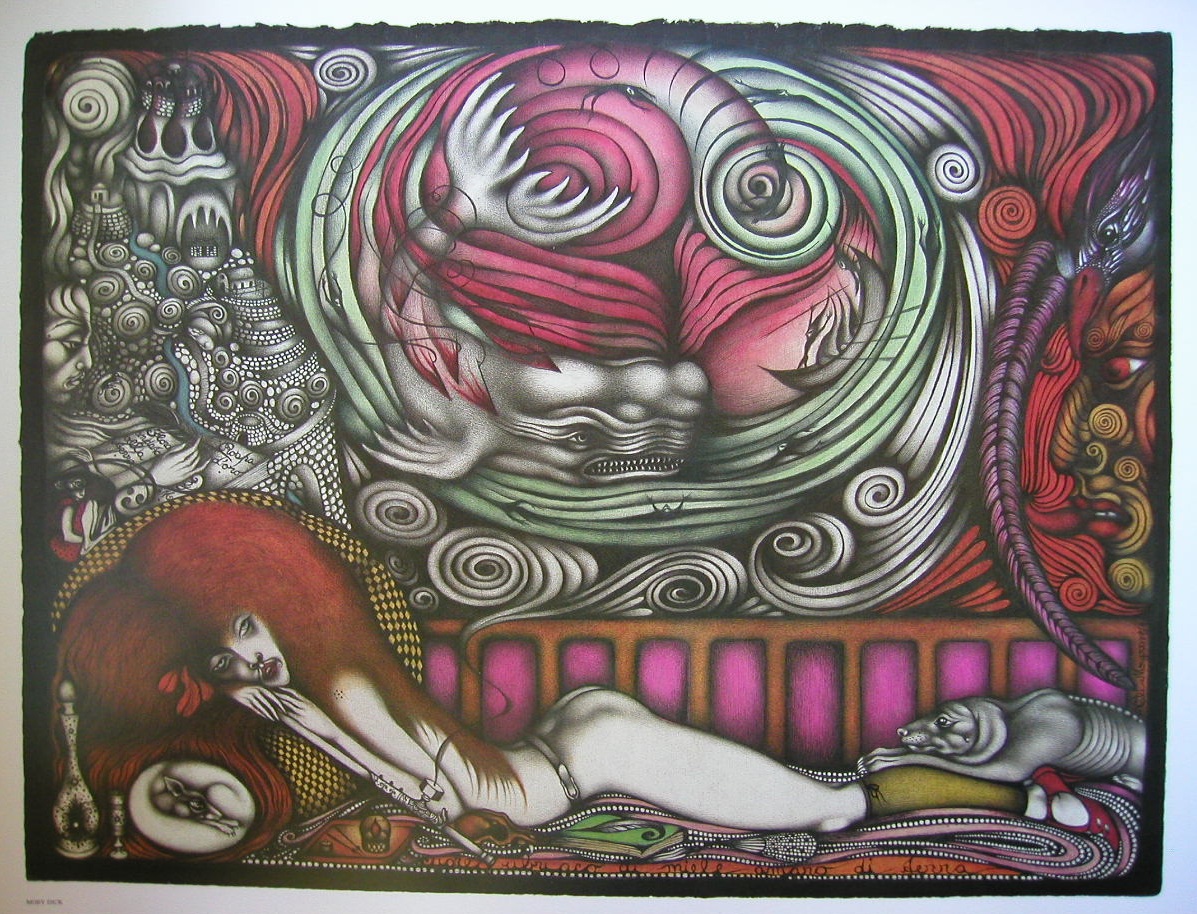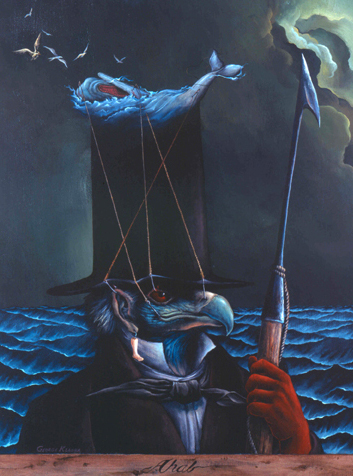|
IV. Nature Red in Tooth, Claw,
and Tentacle : Mark Milloff, George Klauba,
and Moby-Dick
Everything
scholarly or critical I’ve written since Immortal
Monster has been, well, on monsters, and on Moby-Dick.
I’d like to end the Last Lecture with excerpts from the
last paper I presented at a conference. It was about two contemporary
artists’ interpretations of Moby-Dick. It is not at all unusual for
modern
artists to become obsessed with Moby-Dick,
painting or sculpting piece after piece until the fever
passes—as Elizabeth Schultz amply
demonstrated in her monumental study Unpainted to the Last: Moby-Dick
and Twentieth-Century American Art. Here are four examples of
such obsessed artists—Rockwell
Kent, Gilbert Wilson, Robert DelTredici, and my favorite, Vali Myers.
All view Melville's Leviathan in cosmic terms.
Mark
Milloff (whom Schultz discusses) and George Klauba (whom she doesn't) continue the obsessive trend
into the 21st
century. They interpret Moby-Dick in
the context of a question more vexed now than it was in 1851, just
before
Darwin: what is humanity’s “place” in Nature? Are we different in kind from other animals (called
“brutes” in Melville’s day), or are we upright talking apes, omnivorous
bipeds
who slaughter herbivorous quadrupeds, as Melville sees us at the end of
chapter
65, the human animal competing for top predator among all predators?
Milloff
and Klauba, in their rich, overt symbolism--albeit expressed in
completely
different styles--implicitly answer this question. While Milloff
emphasizes the
struggle for survival in a chaotic environment dominated by chance,
waste and
pain . . .
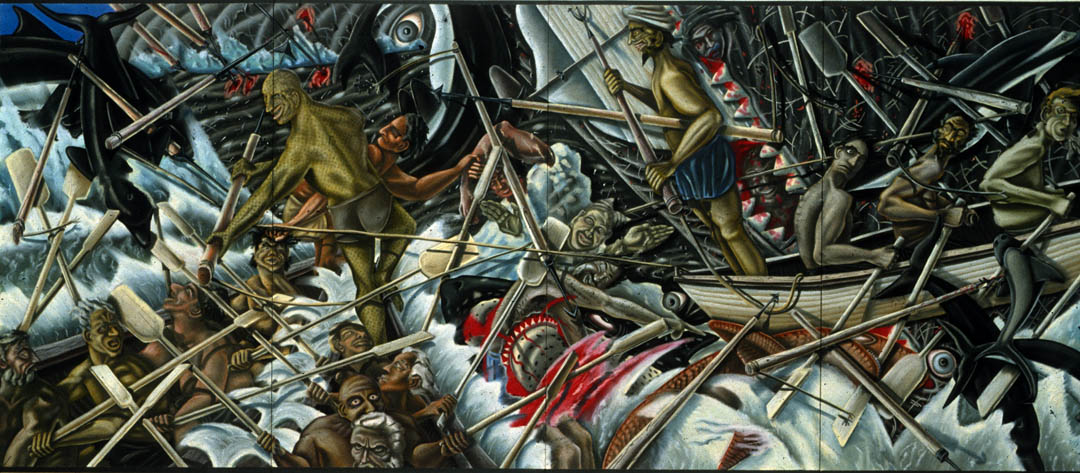
. . . Klauba finds some solace in
the nobility of the individual who reveres
all life, or who has become the victim of human depredation. Both
artists, inspired
by Melville, find continuity between human and animal. And both share
what
Susan Kalter, in her ecocritical article on the novel, has called
Melville’s
“ceto-centric” vision: one that dismantles the Ladder of Being, tips
the Scale
of Nature toward the whale.
When human/animal identities
merge in
literature and art, the result spans a range from the grotesque to the
beautiful. Animal characteristics, especially in Klauba, who produced a
series
of portraits of the novel’s principal characters as birdmen, don’t
necessarily
brutalize or bestialize the human; on the contrary, they may grace the human, adding aquiline dignity
and elegance, but only if the character is noble and sympathetic like Ishmael,
Queequeg, Daggoo, and Tashtego:
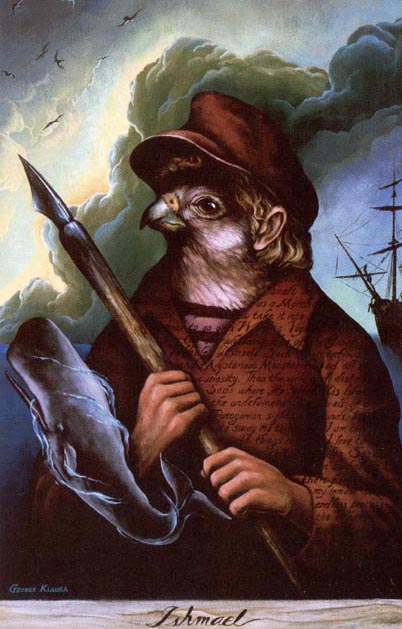
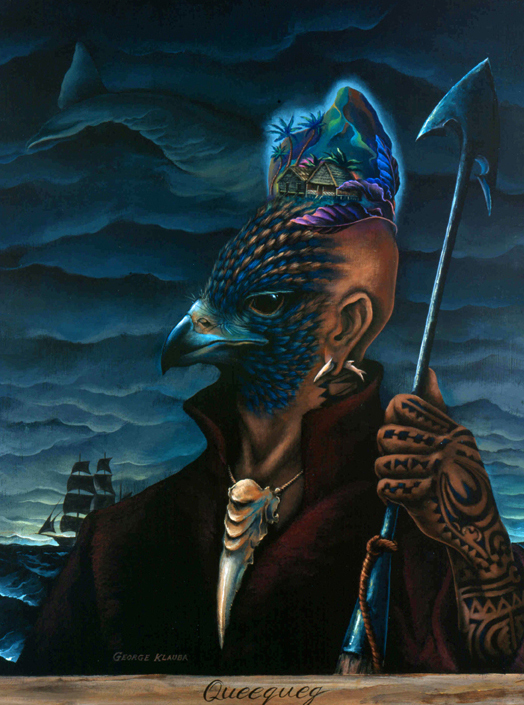
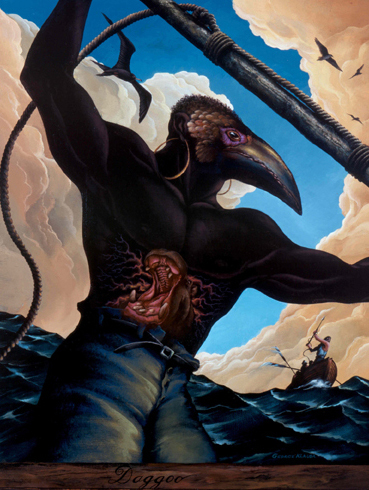
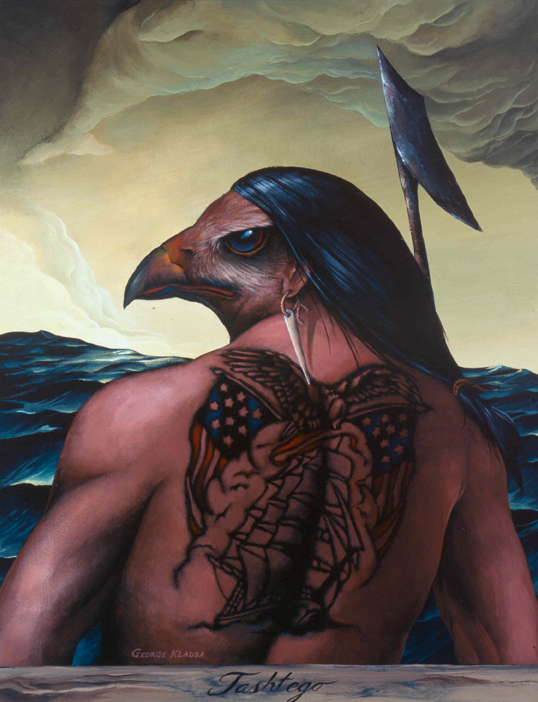
In contrast, the obsessed, the
inhumane, those in whom the
inner shark is not “well-governed” by the inner angel (see Fleece’s
sermon), appear
as grotesques. Here, for example, is Fedallah:
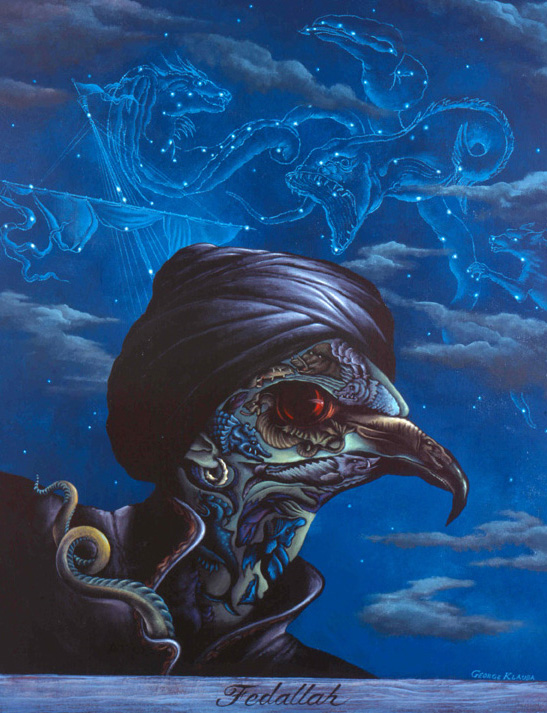
Ahab, a bird/squid/human chimera, is also grotesque, but as a tragic figure he's
a bit more complicated than his shadow Fedallah. He’s
noble, but also obsessed, willing to sacrifice others to accomplish his
demonic revenge.
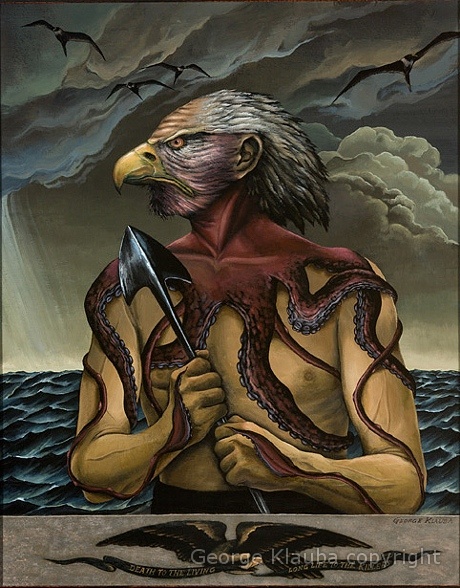
Unlike Klauba, most of
Milloff’s men do
not dominate his pictures—for him, as Schultz points out, the
struggle for survival takes center stage. His wide, crowded canvases
downplay
the individual and the heroic (with the notable exception of Queegueg, below)
as they
represent various species in conflict, competing for dominance in the
sea.
Since the sea is not the environment to which humans have adapted over
the
millennia, they are most often the losers. When butchering whales, they
have to
fight off sharks, even as they contend with the shark within themselves. (“Stripping
the Whale”—notice the teeth on the Pequod’s gunwale.
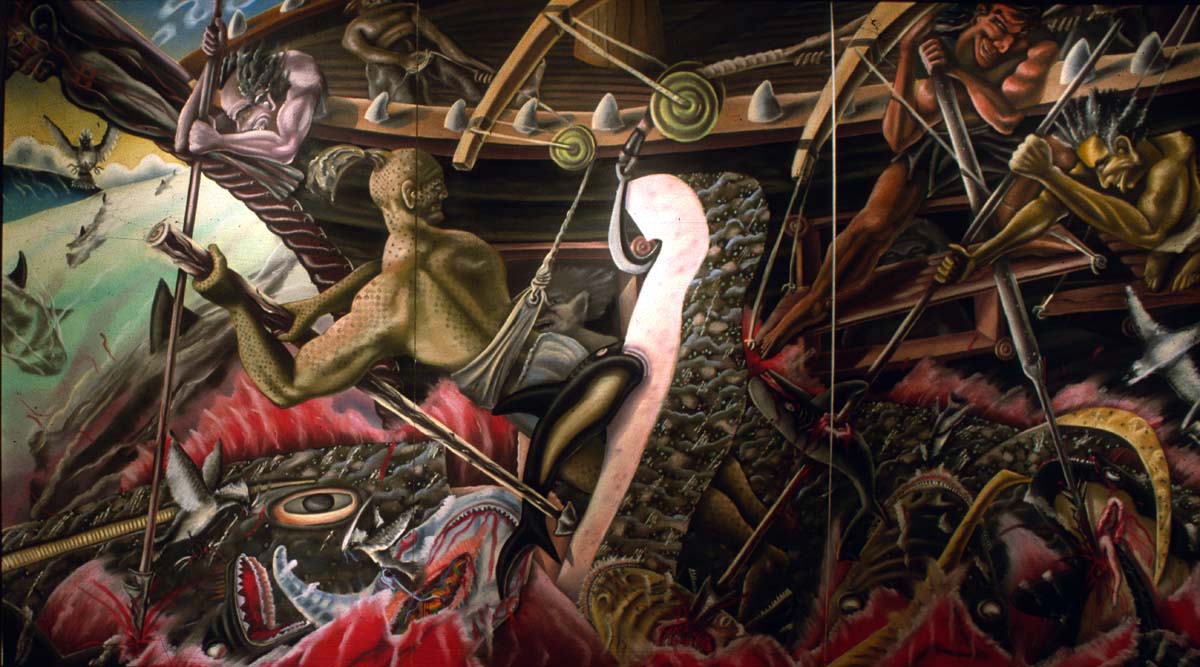
Melville’s theme of human
animality tends
to undercut the notion, long-established in Western culture, that other
animals
are lower than humans on the scale of nature, or Ladder of Being. To
behave
like an animal, according to this cultural meme, is to lower oneself.
And of course the
hierarchic notion tends toward racism: so-called races of color were
assumed to
be lower than white people on the Ladder—closer to animals. Melville
vividly
demonstrates not only that all humans of whatever color equally act
like and as animals, but also that other animals
are not necessarily lower than humans. He denies both racism and
speciesism,
insisting that the whale is the greater being. It is not brute strength
that
enables Moby Dick to destroy Ahab and the Pequod: it is superior
intelligence.
In each of the three climactic chase chapters, the whale outwits his
hunters.
Melville investigates all the
visions and
versions of Nature from the Judeo-Christian view that Nature was
created for
Man’s use, to the Enlightenment Deist notion that Nature provides the
basis for
human morality, to the transcendentalist idealism that has Nature
generated by
spirit—not only God’s, but humanity’s as well, for we are part of God.
But the vision
of Nature most crucial to Moby-Dick as we
read it now is the modern scientific view of Nature as universe to
be
explored, understood, all its creatures studied. When Ishmael presents
himself as
natural historian, he deliberately begins with the unscientific notion,
already
outmoded since 1778, that the whale is a fish. It soon becomes clear
that this
old mis-classification(predating Linnaeus) is the whaleman’s view:
since he
works in a fishery, he catches fish. But then Ishmael lets the whale evolve into a mammal—by the time we get
to the Grand Armada chapter with its “leviathan amours in the deep” and
its
descriptions of nursing mother whales, he has left the fish idea
behind. Not
only are whales mammals, he decides, but they are the most dominant
mammals on
earth. The clash between Ahab’s crew and Moby Dick becomes a clash
between
hunters. The hunted whale is a hunter of squid. All creatures prey on
one
another, whether in “the universal cannibalism of the sea” or the
“horrible
vulturism of earth.”
If we think of the animal as
being both a
metonym and a metaphor, we can make better sense of how the beast is
represented in art. As metonym, it is nearby, it is contiguous to us,
and in
the Darwinian view, continuous with us—we are cousins to the beasts. As
metaphor, the animal stands for some aspect of ourselves. One may argue
that
the metaphorical is only possible because (at least unconsciously) we
recognize kinship, continuity and
contiguity. Before Darwin, animal metaphors were largely degrading; to
call a
man a brute was to insult him. Once evolution is viewed largely as a
blind
process working through natural selection, hierarchy becomes
problematic. At
the very least, it needs to be redefined. Many late nineteenth-century
scientists nonetheless clung to the myths of white supremacy and human
superiority—both of which Melville debunks.
Both Milloff and Klauba
reflect Darwinian
views of Nature, albeit in different ways. I’d like to focus on each
artist’s
illustration of a specific scene in the novel, from “The Chase—Second
Day,”
when Moby Dick rams Ahab’s whaleboat from below, sending it airborne so
that it
“seemed drawn up towards Heaven by
invisible wires,--as arrow-like, shooting perpendicularly from the
sea, the
White Whale dashed its broad forehead against its bottom and sent it,
turning
over and over, into the air; till it fell again—gunwale downwards—and
Ahab and
his men struggled out from under it, like
seals from a sea-side cave” (488--italics added).
Note how the simile likens men to other mammals, the prey
of whales.
This was a carefully crafted attack that involved the whale’s conscious
and
quite successful attempt to tangle up all the boats in their own lines.
He does
this through “untraceable evolutions,” twisting and turning: “. . . the
White
Whale so crossed and recrossed, and in a thousand ways entangled the
slack of
the three lines now fast to him,” that he creates a dangerous chaos of
loose
harpoons and lances that threaten the crew. They have to cut him
free--and
that’s when he dives, preparing to make his torpedo run at Ahab’s boat.
Melville refers to the mess of lines and bristling barbs as “a sight
more
savage than the embattled teeth of sharks.” And when the men are
attempting to
get their boats back in order, they have to fight off the sharks: “ . .
.
little Flask bobbed up and down like an empty vial, twitching his legs
upwards
to escape the dreaded jaws . . . .” (488)
Milloff’s painting, “Drawn
Up towards Heaven by
Invisible Wires” is
one of the last in his Moby-Dick
series (2003).

The
huge pastel on paper (12’ X 8’), certainly captures the chaotic mayhem
caused
by the whale, whose battering ram of a head emerges from the sea, his
lower jaw
painted out of proportion to make the White Whale the fist of the
savage sea.
The distant Pequod sails precariously tilting toward the frame, with
one figure
standing on deck, arms outstretched in alarm. Milloff is
suggesting that all the
other animals in the picture are either in league with the whale or
indifferent to the plight of
the men. Numerous seabirds fly all over the place, reminding us that
only the
men are in danger, for they are out of their element. Ahab’s boat is at
top
center, and he himself hangs on to the airborne boat for dear life,
tangled up
in whale-lines. Ahab is holding his harpoon
uselessly between two fingers, and it is pointed away from
the whale.
The only shark is white belly
up at the
bottom, appearing to be no threat to anyone—he literally pales beneath
the
power of Moby Dick. The men are falling, floating, swimming,
clutching—all the
tools supposed to reflect superior intelligence, the weapons crafted
for
superior hunting, all wrecked or rendered useless. If you look from the
helpless ghostlike figure in the water, then move your gaze across the
scene,
you encounter faces engulfed, disembodied; then you see the glowing,
glowering eye
of the triumphant whale. Milloff shares Melville’s
cetocentric
perspective. The eye of the whale dominates the picture, and the whale
itself
is too grand to be fully depicted.
In Klauba’s
version of the passage (2004; acrylic on
panel, 18” X 14.5”), Moby Dick is known only by his impact; he himself
is not
in the picture, but the scene represented is a result of his wrath.
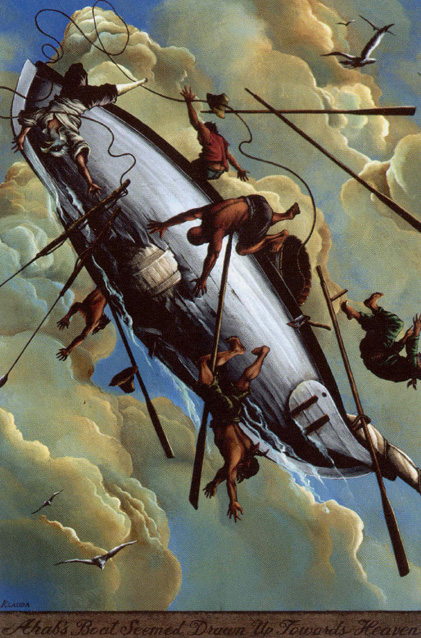
A hole (not
in the novel) gapes in the bottom of the boat, with Ahab falling out of
the
boat, his bird-head not looking so fierce now, but vulnerable as a
baby, his
hand just out of reach of his harpoon. As in Milloff, the oars are
suspended in
the air, useless in this element; the birds soar all around the
tumbling men,
who have lost both hats and harpoons. By keeping the sea off frame,
Klauba
implies that the stricken boat is indeed among the clouds, even higher
than two
of the birds, and situating it diagonally with water streaming from it,
he
suggests an ironic resemblance to a breaching whale. Moby Dick has
indeed just
breached in defiance, before the men lowered their boats. Now a broken
boat
breaches in pale, unwilled imitation and utter defeat. The men may have
the
heads of birds, reminding us of their animal nature, but instead of
outspread
wings they have outspread hands and flailing arms, reminding us, as
does
Milloff, that they do not belong in either sea or sky; they may “seem drawn up towards Heaven,” but they
don’t belong there in either sense of the word, as Ahab made abundantly
clear
when he baptized his harpoon in the name of the devil. He has created
his own
hell, damning and dooming his crew in the process.
Both of these 21st-century
artists seize upon one of the most modern aspects of Moby-Dick,
which they recognize as a key text in the paradigm shift
that would accelerate with Darwin. Humans are part of Nature, not
separate from
it. We participate in the struggle for existence among species. In
Melville’s
sea, we are the invasive species, the whale is our prey. In Milloff, as
he
himself wrote, “Man never wins,” even when he is butchering his prey,
because,
as Klauba also demonstrates in this brilliant depiction of Ahab, he is prey
to his own nature:
On the
whole, Milloff’s vision is more
unrelentingly grotesque, physical and bloody. While some of Klauba’s
portraits
are clearly qrotesques, he seeks out the beautiful and sympathetic.
Even though
he gives us tooth, claw, and tentacle, he also re-envisions the novel’s
spiritual, mystical, and metaphysical power, preserving both the
natural
history and the supernatural mystery of Leviathan.
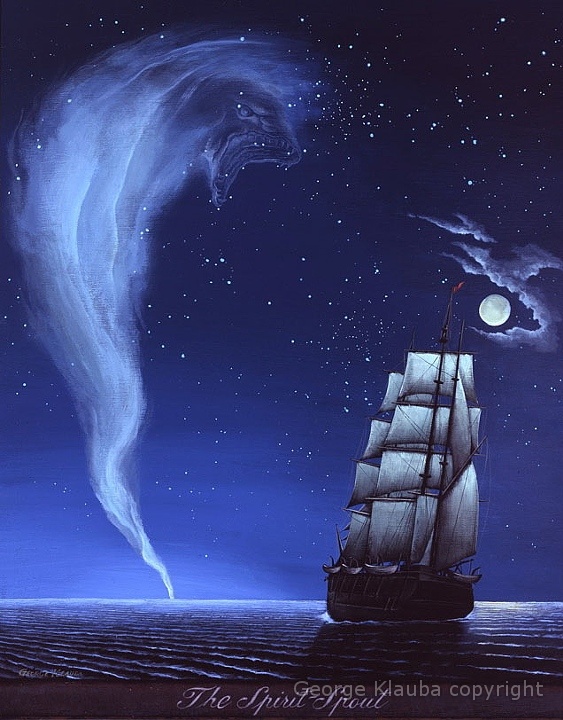
|
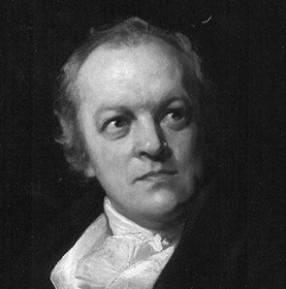
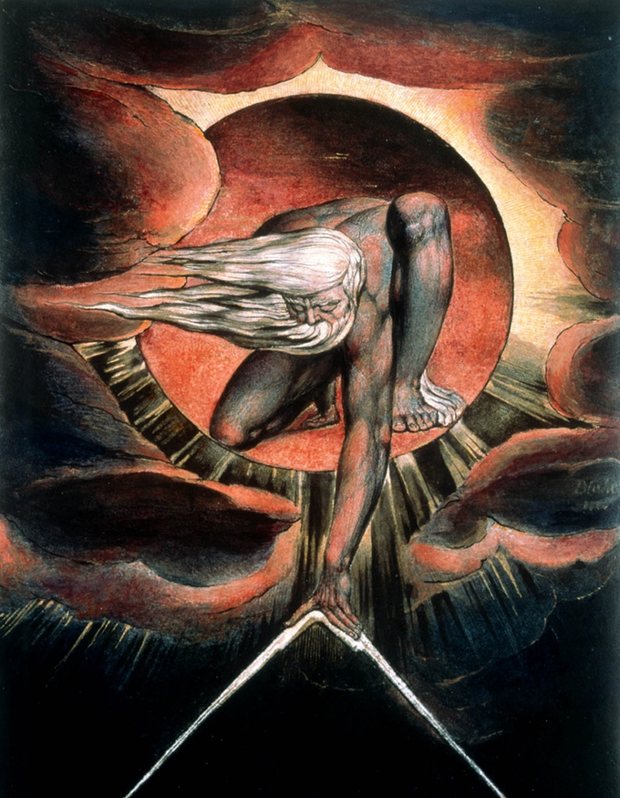
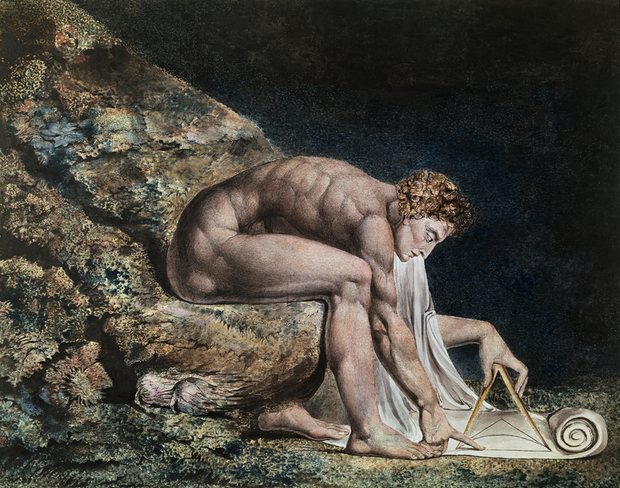
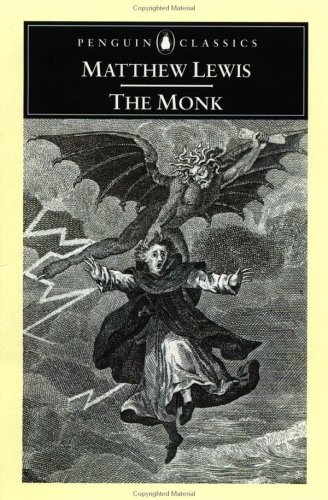
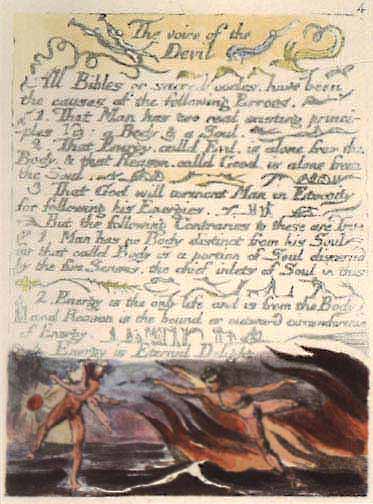
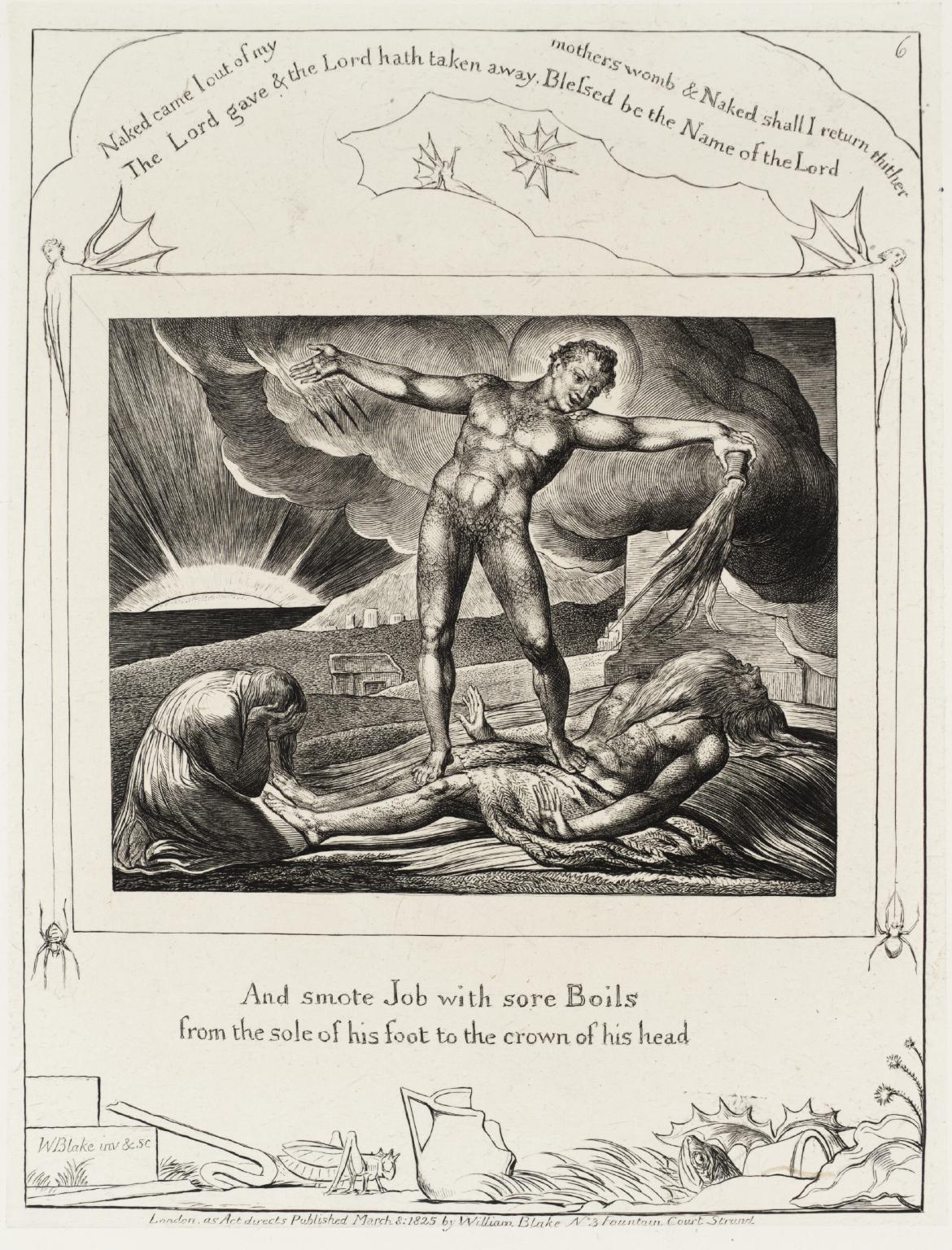
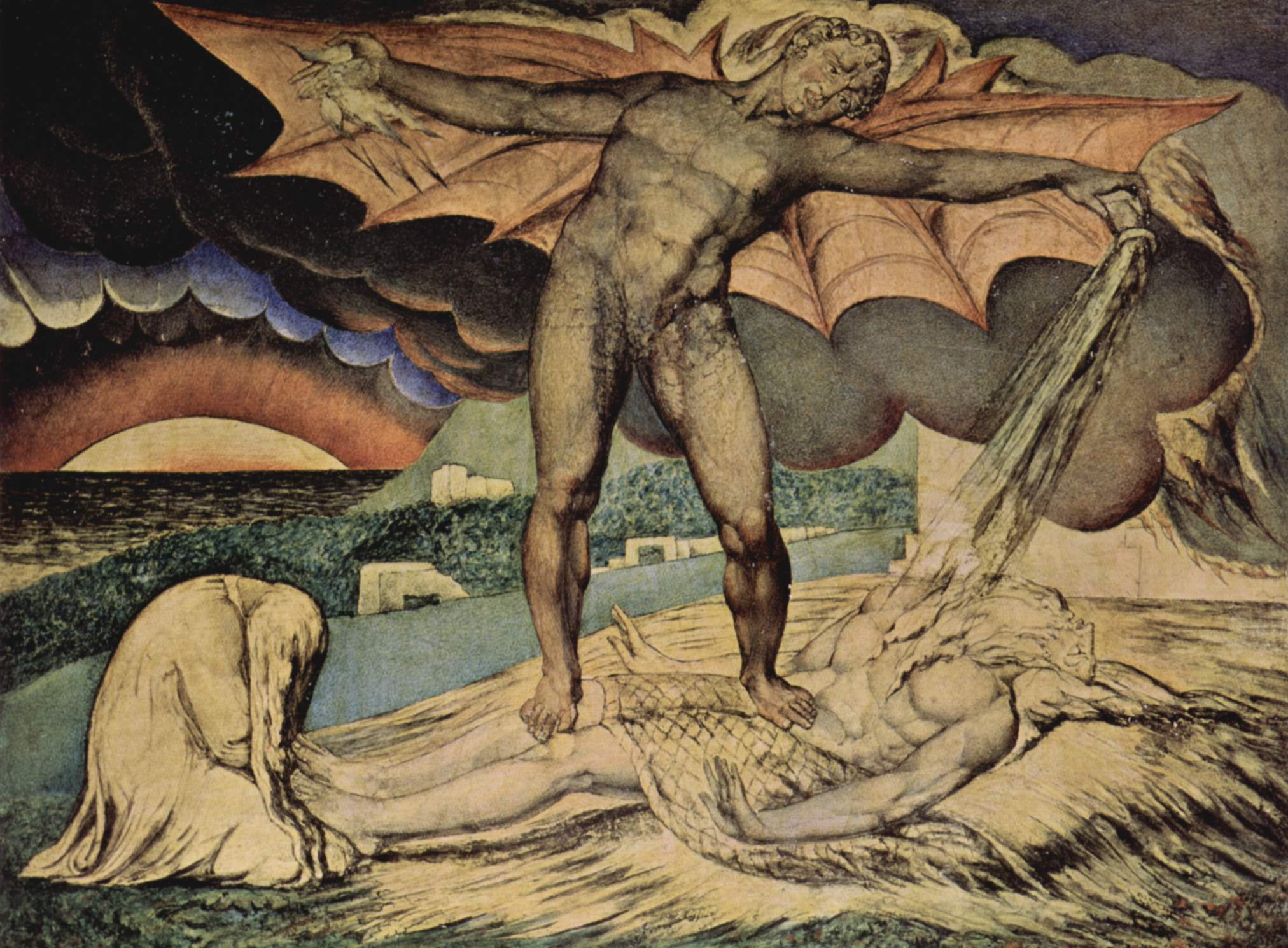
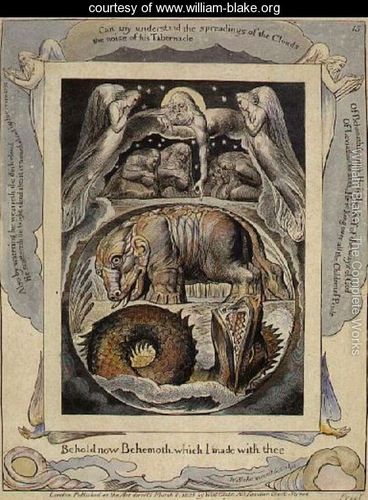
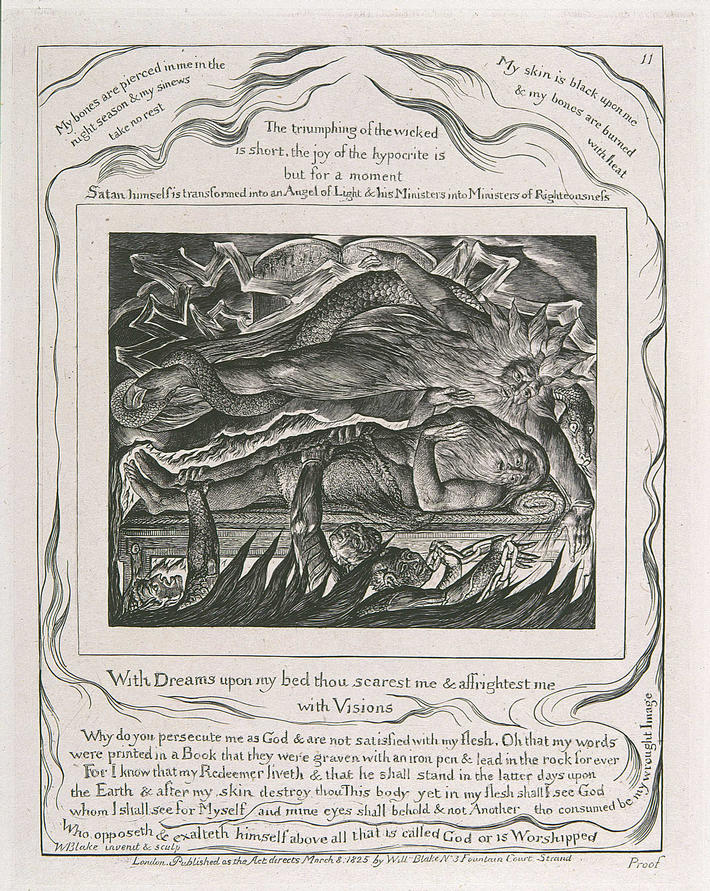
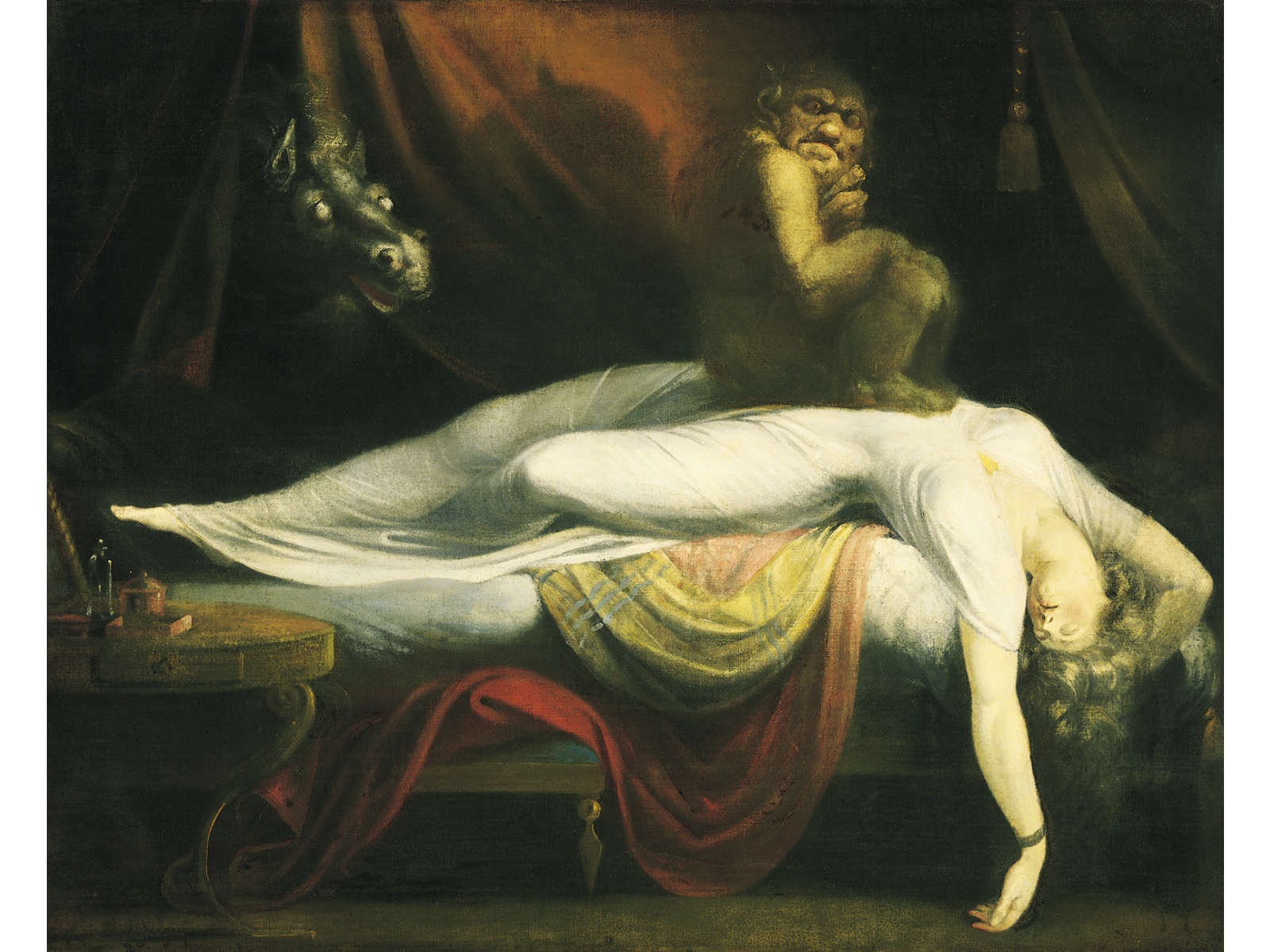
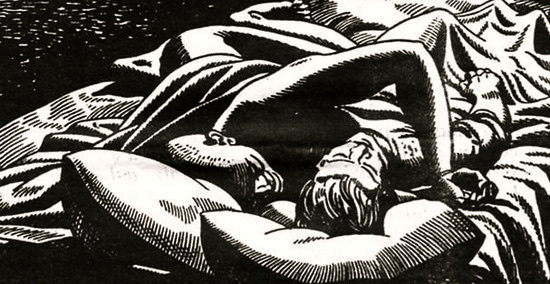
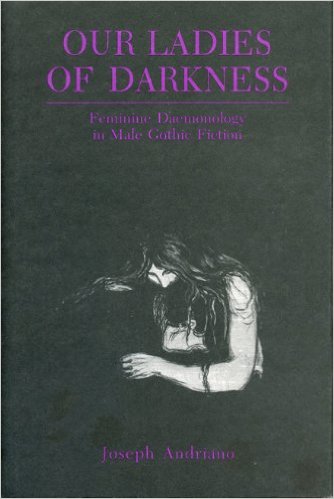
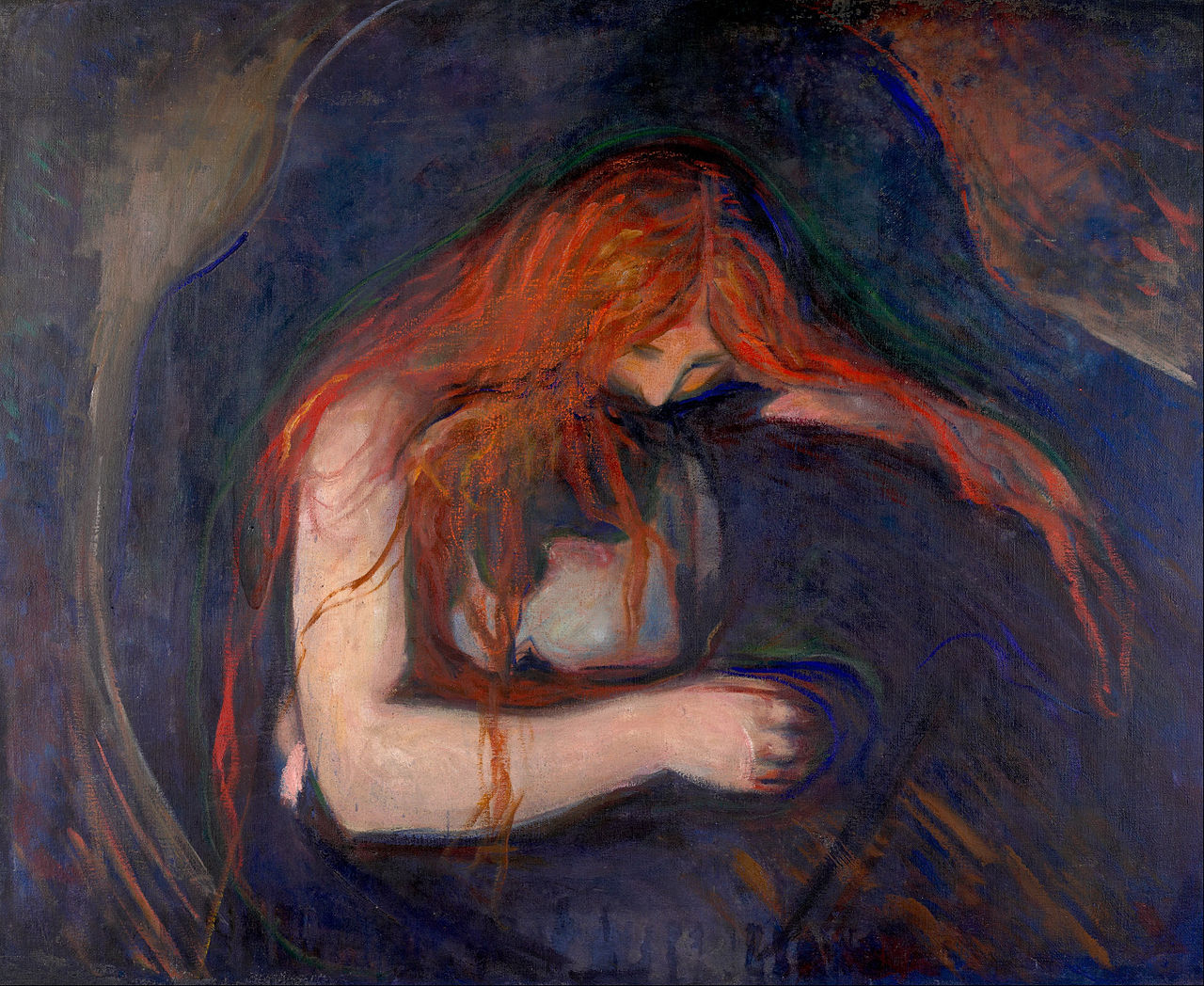
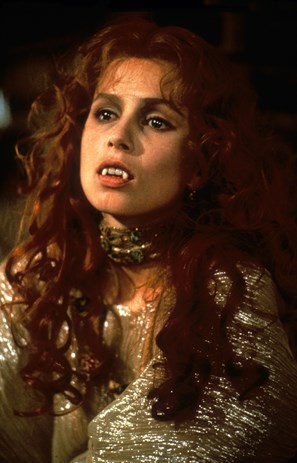
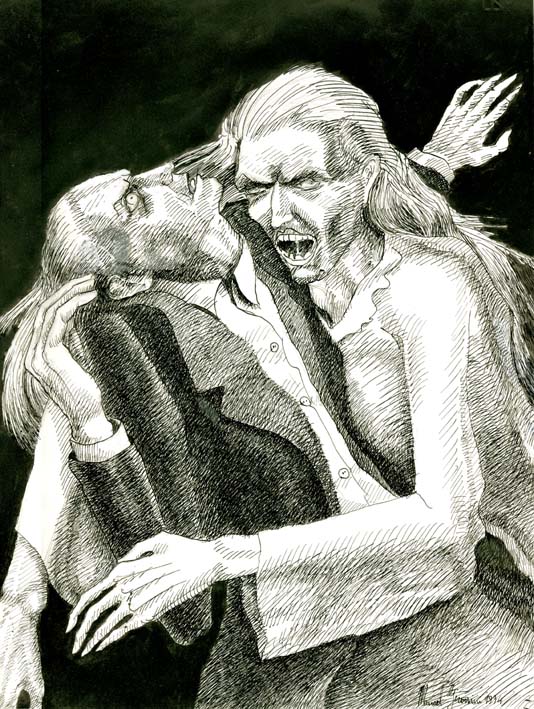
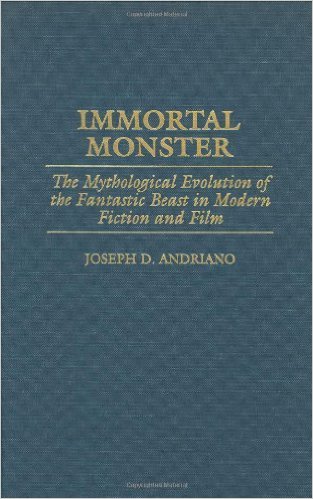
 here in Gustave Doré’s 1865 engraving, being
defeated by Jehovah—
here in Gustave Doré’s 1865 engraving, being
defeated by Jehovah—